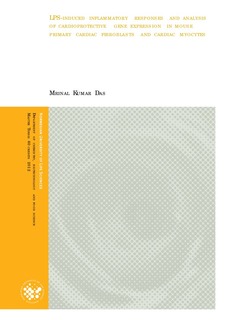| dc.description.abstract | Sepsis, an uncontrolled inflammatory response is an important cause of death among the critically ill patients. Several lines of evidences have confirmed depression of myocardial function in sepsis which led researchers to focus intensely on myocardial dysfunction in sepsis. Several studies reported that LPS-induced pro-inflammatory cytokines, TNF-α and IL-1β play a key role in sepsis-induced myocardial dysfunction. On the contrary, the secreted CCN matricellular proteins, in particular CCN2/CTGF (connective tissue growth factor), CCN5/WISP-2 (Wnt1-inducible signalling pathway protein-2) and the TGF-β superfamily cytokine, GDF-15 were shown to play cardioprotective roles in cardiac dysfunction and remodelling. In our present study, the effects of LPS have been investigated in adult mouse cardiac fibroblasts and cardiac myocytes. We assessed the mRNA levels and the protein levels of TNF-α, IL-1β, CCN2, CCN5 and GDF15 in the absence or presence of LPS in the adult mouse primary cardiac fibroblasts and cardiac myocytes by real-time q-PCR and Western blot analyses. We also investigated the viability of adult mouse primary cardiac myocytes after exposure to LPS (0.1 μg/ml and 10 μg/ml) for different periods of time (0, 3,6,12 and 24 hours) by trypan blue exclusion assay. Real-time q-PCR demonstrates induction of mRNA levels of TNF-α and IL-1β in LPS-treated adult mouse cardiac fibroblasts and myocytes. Particularly, in cardiac fibroblasts the induction of mRNA expressions of TNF-α and IL-1β were found to be much more robust than that in cardiac myocytes. Western blot analysis of extracts of cardiac fibroblasts revealed that the precursor protein levels of both TNF-α and IL-1β were significantly induced in the LPS stimulated cardiac fibroblasts compared to non-stimulated cells. However, in cardiac myocytes the precursor protein levels of TNF-α and IL-1β remained unchanged in LPS-treated cells compared to control cells. In addition, gene expression analysis revealed down-regulation of CCN2 and CCN5 in LPS stimulated cardiac fibroblasts, whereas mRNA levels of GDF15 were found to be up-regulated in LPS-treated cardiac myocytes. Assessment of LPS-induced cell death of adult cardiac myocytes demonstrates significant decrease of cell viability in LPS-treated cardiac myocyte cultures. In our future studies, we will investigate the cytoprotective effects of recombinant CCN2, CCN5 and GDF15 at LPS-induced cell death in cardiac cell cultures. It would also be interesting to delineate the effects of LPS in vivo using CCN2-transgenic mouse model with cardiac specific overexpression of CCN2. | no_NO |
